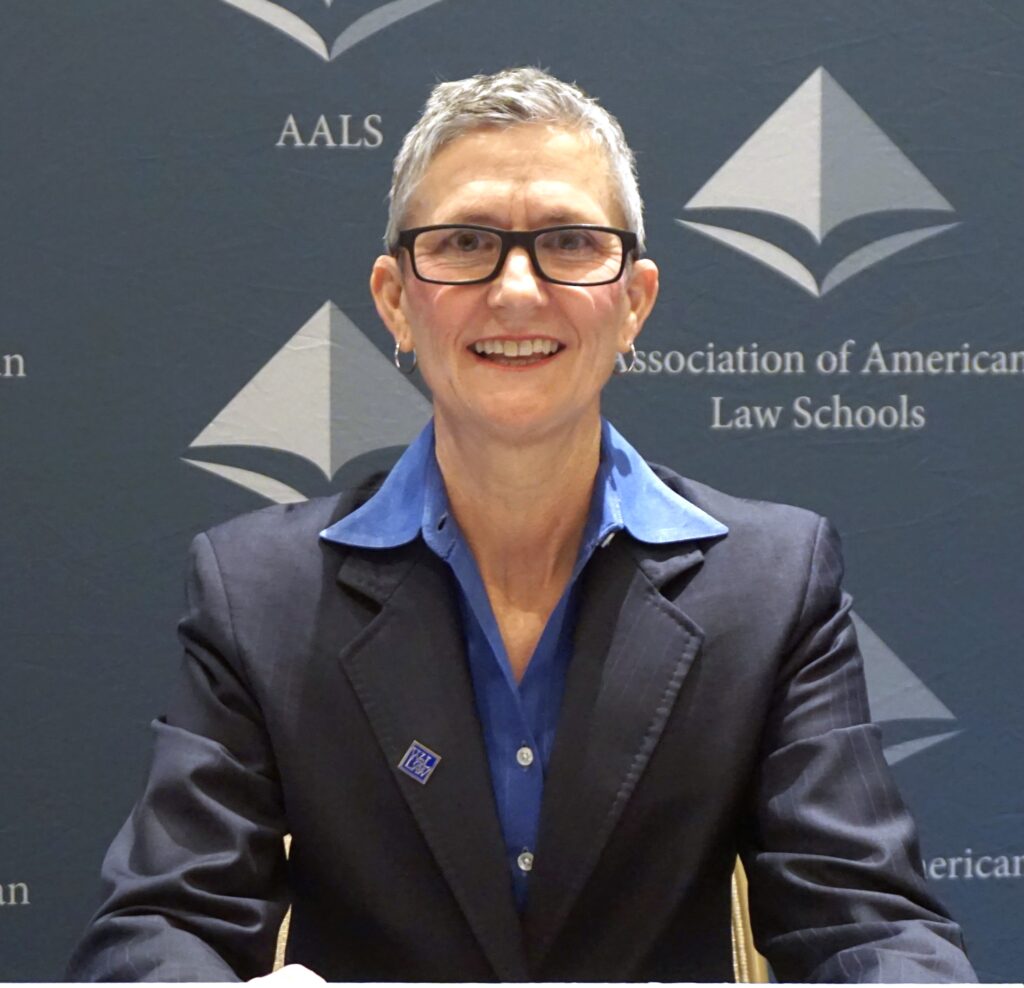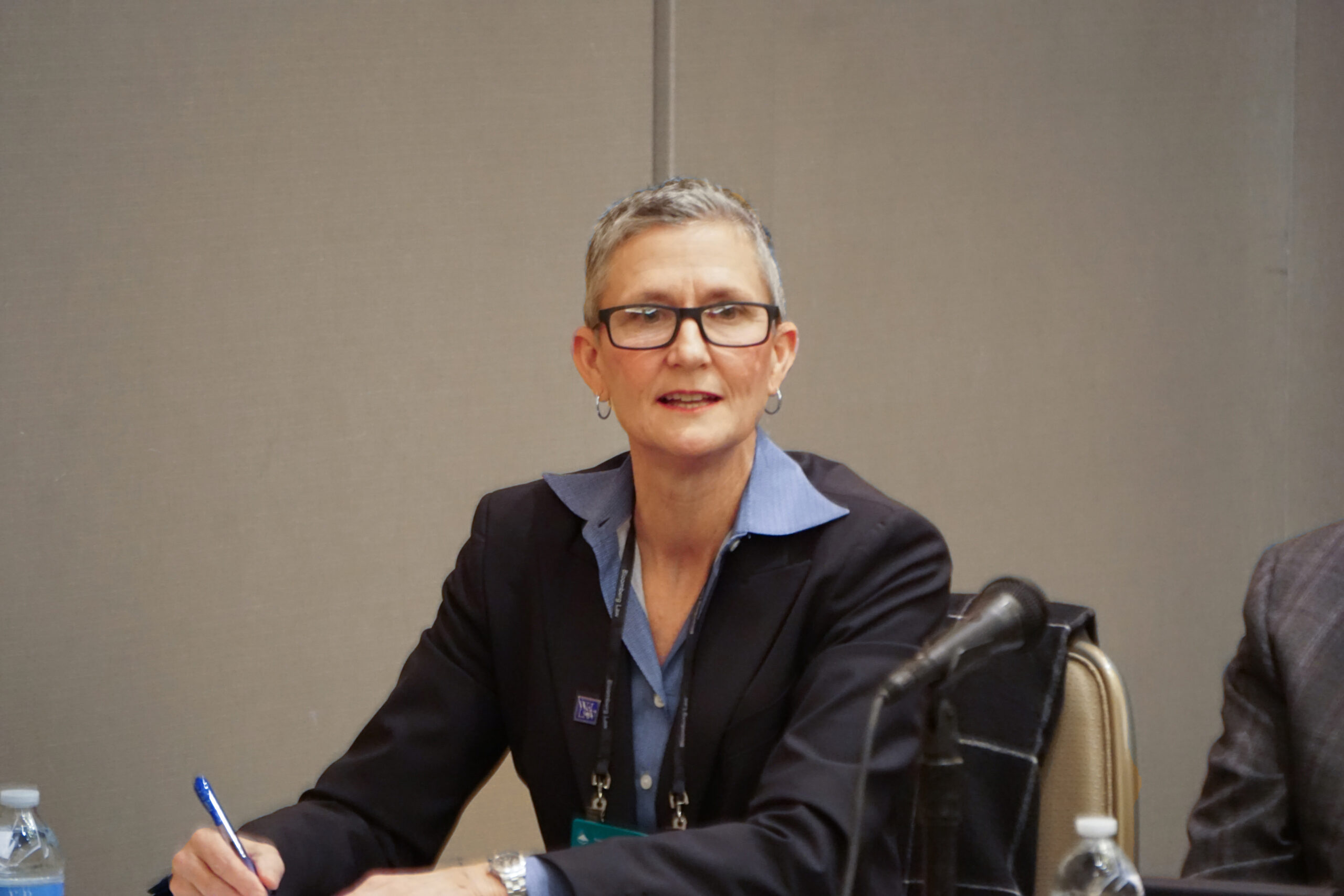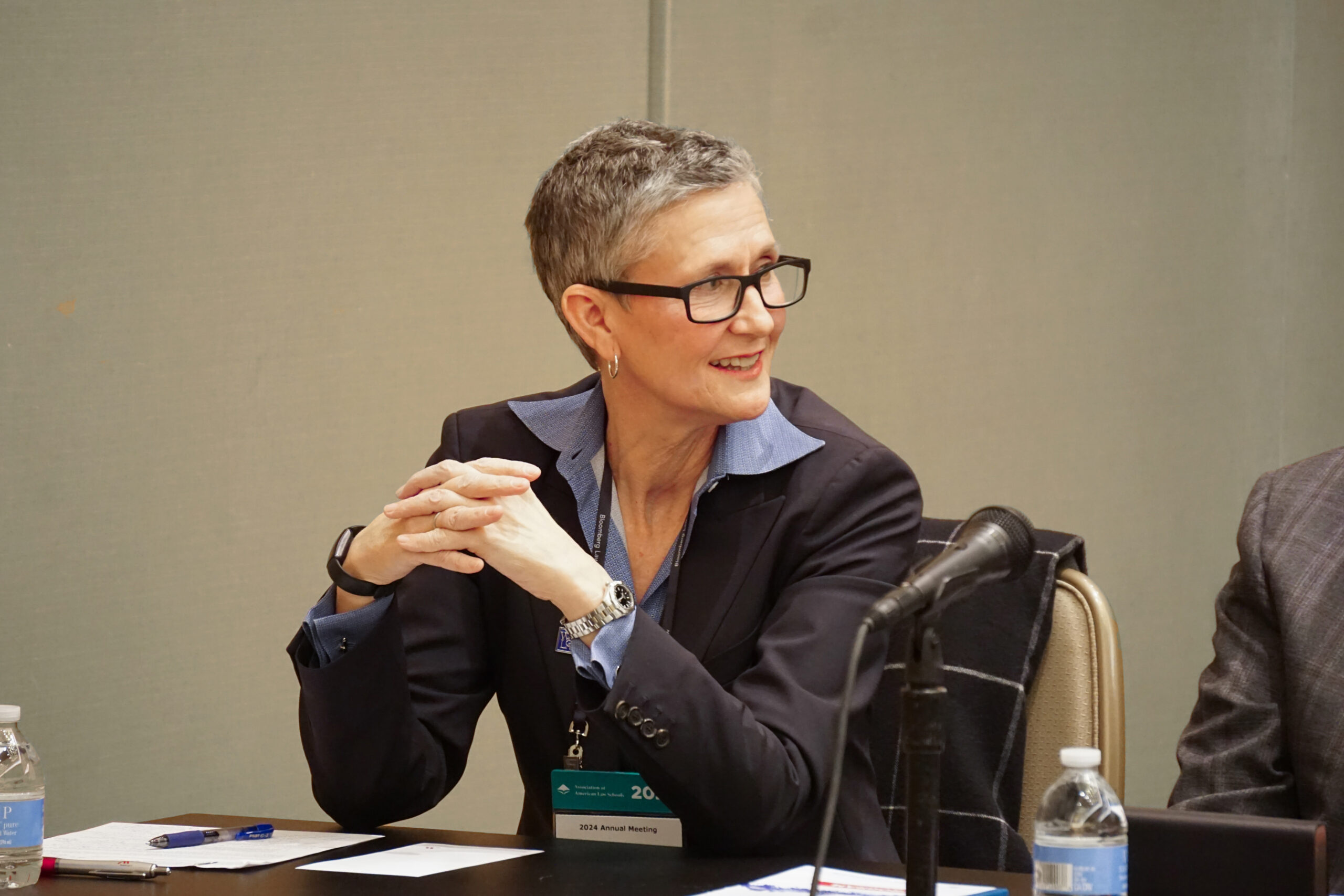By AALS President Melanie Wilson, Dean and Roy L. Steinheimer, Jr., Professor of Law at Washington and Lee University School of Law
In January, I announced my theme for 2024—“Courage in Action.” I said in my Presidential remarks during the Annual Meeting that I would challenge myself, the leadership of the AALS, and each of our members to continue to practice and model courage.
Courage means different things in different contexts. Although it sometimes requires bold or defiant acts, courage can also show up in quiet, everyday ways. Courage is being our best selves and bringing a positive attitude and energetic leadership to everything we do.
As I think about courage at this moment in the history of law schools, my thoughts turn to admissions. Deans of law schools, deans and directors of law admissions, faculty and staff at, and applicants to, law schools are all finding their way in the wake of the Supreme Court’s decisions in the Harvard College and University of North Carolina cases. See Students for Fair Admissions, Inc., v. President and Fellows of Harvard College. Law schools in some states (Arizona, California, Florida, and Michigan, for example) were already grappling with legislative mandates proscribing the use of race and ethnicity when making admissions decisions. Now, it is a nationwide challenge.
Everyone understands that the Supreme Court decisions require mostly race-blind admissions decisions. Sure, an applicant can reveal their race and ethnicity as they discuss “how race affected [their] life, be it through discrimination, inspiration, or otherwise,” but in those instances, the law still seems to require that admissions professionals disaggregate race from the effects and influences of race. According to the Court, it is the experience of the applicant and the impacts of race, ethnicity, and other identities that matter. Thus, an applicant may share their race or other identity, but a decision maker must not let race itself sway the admissions decision. Perhaps a decision maker learns the race of a prospective student during the student’s visit to campus to evaluate the law school, when the admissions team interviews the applicant for a competitive, elite scholarship, or when the admissions professional interacts with a prospective student by Zoom.
How do decision makers “unsee” race and ethnicity when they learn this information? We now know enough about implicit bias to understand that this information and these interactions will impact admissions decisions. The information will inadvertently disadvantage some applicants and privilege others. But it is impossible to predict those impacts because, by definition, implicit bias affects us at an unconscious level, not in a manner we know and can easily prevent.
It takes courage, integrity, grace, and humility to serve as an admissions professional in the face of these challenges. I am impressed with, and heartened by, the sincere and steadfast efforts my admissions colleagues and other professionals are making to foster inclusion, belonging, and access at a time that feels intensely divisive. My hope is that every student who enters law school finds their purpose and a supportive community in which they can grow and become their best selves, as well as great lawyers and leaders.
Even if applicants were plentiful, this would be a stressful time for law schools. According to Law School Transparency, in 2010, 1L enrollment at accredited law schools exceeded 50,000. Then it began to fall. In 2022, there were just under 40,000 1Ls enrolled at ABA-accredited law schools. In this environment, it takes a great deal of courage to set and implement a plan – typically involving extending millions of dollars in scholarships, understanding that not everyone will accept and enroll, and living with uncertainty about how many students will matriculate, given a finite budget. If a school underestimates the number of students who enroll, it may exceed space and overstretch the people and resources needed to support such a large class of 1Ls. If a school is not generous enough with the number of students it accepts or with its scholarship offers, it may not yield a class with sufficient size or credentials, resulting in the school falling short on budget expectations and compromising aspects of the core academic mission. In other words, law admissions was a stressful business before the recent Supreme Court pronouncement.
Beyond a legal mandate prohibiting the consideration of race as one of the factors in admissions decisions and a need to enroll a class of sufficient and appropriate credentials, there remains intense pressure to enroll a broadly diverse class. Most law deans, law schools, and institutions of higher education greatly value diversity in the student body. Until the 2023 Harvard/UNC decisions, diversity in a student body was also “constitutionally permissible” for an institution of higher education, per Bakke v. California (1978). As Justice Lewis Powell emphasized in Bakke, the “quality of higher education – is widely believed to be promoted by a diverse student body.” Bakke dealt with medical school admissions, but the value of diversity of backgrounds, experiences, religions, viewpoints, ethnicities, races, genders, gender identities, abilities, sexual orientations, military experience/veteran status, and all other identities and statuses is critical to law schools in which we are preparing students to represent people of all identities, backgrounds, and statuses. Few would debate the tremendous value of diversity in a classroom designed to teach students to think critically and see every problem from multiple perspectives, including those most opposed to our own. Different experiences and viewpoints bring creative ideas and thoughts to every problem.
What does courage look like in this new admissions context? Admissions professionals are showing us. They are doing the work with dedication and optimism – reading every applicant’s file, looking for indicators of future success in law school. They are complying with the law, while continuing to build streams and pools of diverse applicants. They are sharing the message that diversity in the classroom matters to learning, and they are encouraging every qualified person to submit an application. Law deans are exercising courage too – backing and supporting their deans of admission. And, as they always do, faculty and staff are doing their part. They are spending more time with future students, advising, mentoring, and supporting them.
I hope you will take some time to reflect on the many ways you are pursuing and encouraging courage in your classrooms, with your scholarship, and through service to your school, university, and broader community.
Tough times always reveal the courageous. That’s what I am seeing from our admissions and faculty colleagues. They are modeling “Courage in Action.” I am deeply grateful for their efforts and the example.



